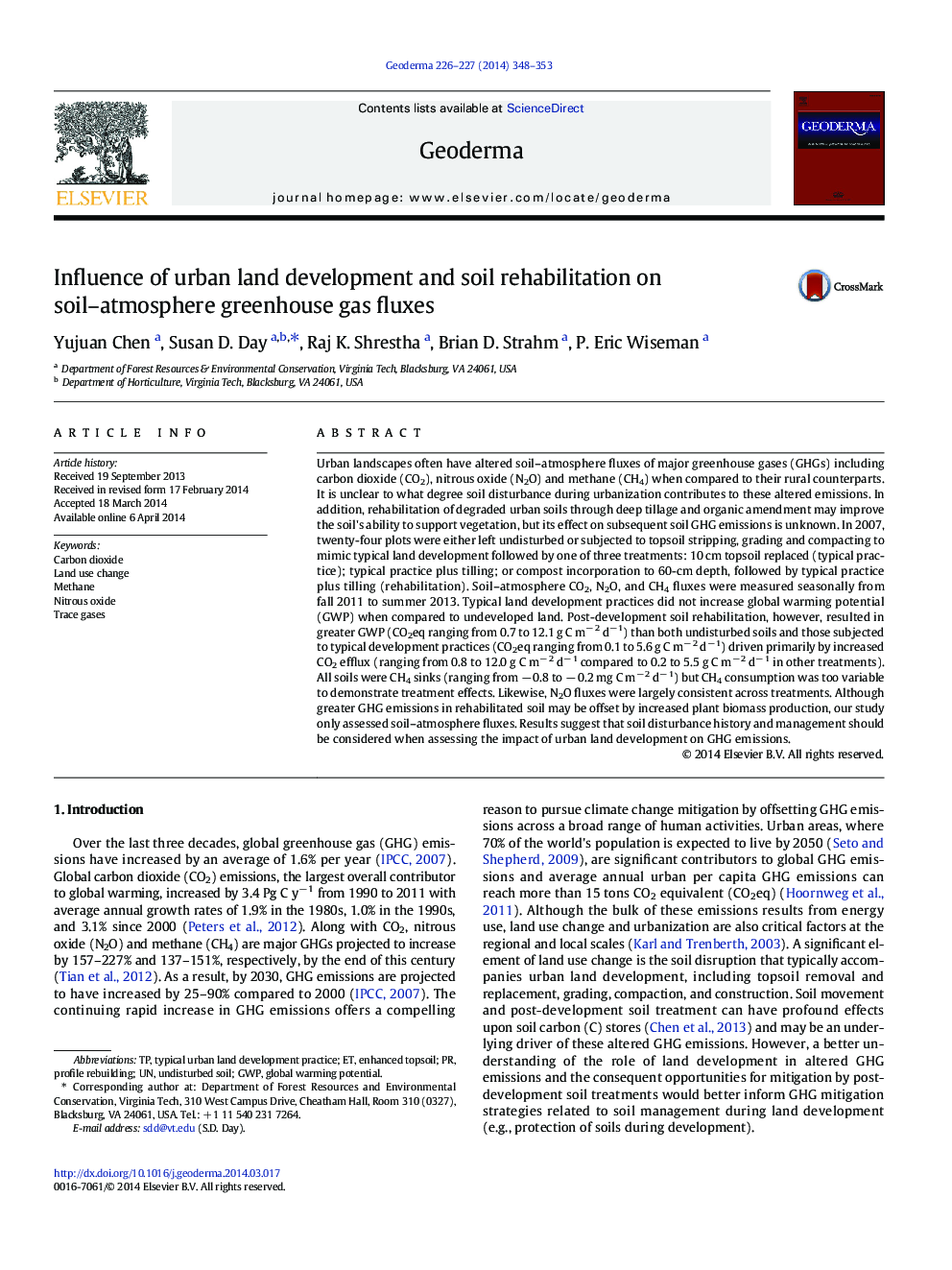| Article ID | Journal | Published Year | Pages | File Type |
|---|---|---|---|---|
| 6408893 | Geoderma | 2014 | 6 Pages |
â¢GHG fluxes were similar in undisturbed and post-urban development soils.â¢Soil rehabilitation increased CO2 efflux but had little effect on other GHGs.â¢Pre- and post-development soils with or without rehabilitation were CH4 sinks.
Urban landscapes often have altered soil-atmosphere fluxes of major greenhouse gases (GHGs) including carbon dioxide (CO2), nitrous oxide (N2O) and methane (CH4) when compared to their rural counterparts. It is unclear to what degree soil disturbance during urbanization contributes to these altered emissions. In addition, rehabilitation of degraded urban soils through deep tillage and organic amendment may improve the soil's ability to support vegetation, but its effect on subsequent soil GHG emissions is unknown. In 2007, twenty-four plots were either left undisturbed or subjected to topsoil stripping, grading and compacting to mimic typical land development followed by one of three treatments: 10 cm topsoil replaced (typical practice); typical practice plus tilling; or compost incorporation to 60-cm depth, followed by typical practice plus tilling (rehabilitation). Soil-atmosphere CO2, N2O, and CH4 fluxes were measured seasonally from fall 2011 to summer 2013. Typical land development practices did not increase global warming potential (GWP) when compared to undeveloped land. Post-development soil rehabilitation, however, resulted in greater GWP (CO2eq ranging from 0.7 to 12.1 g C mâ 2 dâ 1) than both undisturbed soils and those subjected to typical development practices (CO2eq ranging from 0.1 to 5.6 g C mâ 2 dâ 1) driven primarily by increased CO2 efflux (ranging from 0.8 to 12.0 g C mâ 2 dâ 1 compared to 0.2 to 5.5 g C mâ 2 dâ 1 in other treatments). All soils were CH4 sinks (ranging from â 0.8 to â 0.2 mg C mâ 2 dâ 1) but CH4 consumption was too variable to demonstrate treatment effects. Likewise, N2O fluxes were largely consistent across treatments. Although greater GHG emissions in rehabilitated soil may be offset by increased plant biomass production, our study only assessed soil-atmosphere fluxes. Results suggest that soil disturbance history and management should be considered when assessing the impact of urban land development on GHG emissions.
